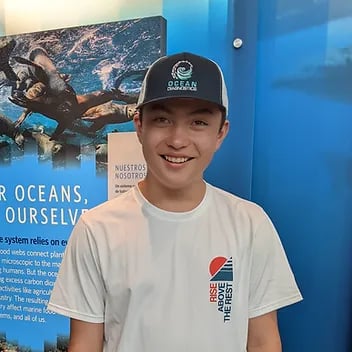PICKING UP THE PIECES
The breakdown on microplastic pollution and how YOU can make real change.
What if we told you that YOU hold the keys to the microplastic pollution problem?
Learn what microplastic pollution is, where it comes from, why it is a concern, what's being done about it and how YOU can get involved. Together, WE can ALL make a difference to protect our future.
WHAT ARE MICROPLASTICS?
Plastic pieces smaller than 5mm (the size of a pencil eraser) are called microplastics.
WHEN PLASTIC ENTERS THE ENVIRONMENT IT BREAKS DOWN INTO SMALLER AND SMALLER PIECES
Most microplastics are so small you can only see them with a microscope.
The most common microplastics may surprise you. Microplastics can include nurdles (manufactured plastic beads), car tire particles and clothing fibers.
MICROPLASTICS ARE EVERYWHERE
Microplastics have been found in all of Earth’s environments, including our oceans, freshwater, soil, air, wildlife, food, drinking water and even our own bodies!
Microplastics have even been found in the most remote areas of the globe, including Antarctica and Mount Everest.
WHERE DO MICROPLASTICS COME FROM?
Microplastics come from the break down of larger plastic litter. Examples include:
- food and drink packaging like take-out containers, single-use items, soft drink bottles, frozen ready meal trays, plastic cling wrap, to-go cups, plastic bags, meat trays, bottle caps, and even loose fruit and chip bags
-
protective equipment like face masks and gloves
-
fishing gear
Microplastics also include:
-
pieces and fibres released during the use of plastic containing products, like car tires and clothing
-
particles used as abrasives like those in toothpaste or face scrubs, and
-
nurdles used to make plastic items.
Microplastics make their way into our environment from our households, cities, coasts, agricultural lands, and industries through treatment plants, city stormwater sewers, snowmelt, runoff and waste mismanagement...phew!
WHY ARE MICROPLASTICS A CONCERN?
Microplastics stay in the environment for a long time and are a major source of the global plastic pollution problem.
All plastic is made from oil and gas, so the manufacturing process releases harmful greenhouse gases that contribute to climate change.
Microplastics can contain toxic chemicals like hardening and softening agents, dyes, flame retardants and more.
Microplastics are often mistaken for food and eaten by small creatures in both water and land ecosystems, making their way through the food chain. This can harm our ecosystems, food security, health and economy.
When animals eat microplastics, the animal can feel full without the nutrition they need. Microplastics can cause blockages in the stomach of small animals. Chemicals can leach off of microplastics and cause hormone imbalances. Microplastics can also transfer bacteria or invasive species to marine animals or new environments.
When animals and humans consume microplastics, toxic substances can leach into their bodies.
WHAT CAN WE DO ABOUT IT?
The best way to prevent microplastic pollution is to not create plastic waste in the first place
Solutions to stop microplastic pollution at the source include regulations, policies, better waste management, and industry and community action.
To create these solutions, decision makers need more data on what type of plastics end up in the environment, where they come from and their effects.
Scientists around the globe work to collect this data. But much more is needed.
That’s where YOU come in!


